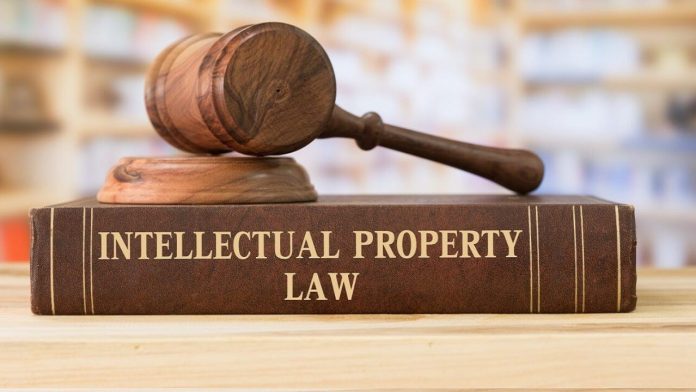This article is written by Shubhangi Agrawal, from Hidayatullah National Law University, Raipur (C.G.). This article describes the unique relationship of IP with contemporary art and the reform which needs to be done to incorporate contemporary art in the field of IP.
Table of Contents
Introduction
The global art market of contemporary art was valued at over 67 billion U.S. dollars in 2018, up to almost 3 billion from the previous year’s value. This increase is also shown in the volume of global art sales which reached approximately 40 million transactions in 2018, up from 39 million the previous year. The increasing value of the market and the generation of new opportunities and also the amount of creative freedom that the contemporary art sector allows through paintings, sculptures, or other art forms allow an individual to express themselves in a way that could be easily approached by other people. With an increasing amount of people of this generation involved in contemporary art forms, it also brings difficulty in regulating such forms as this involves personal ideas and approach which is certainly different from one person to another.
Intellectual rights surely is an effective way of safeguarding such exemplary art and property. With enormous different art forms emerging and a rapidly growing pool of work in a world of technology where information can be shared with a blink of an eye, it is a tough job that the original artists have rights over their work. This part of the law has a very unique feature that enables artists of various art forms to claim their ownership and have rightful title over their creativity not only this but such laws also act in favour of artists to make sure they get the right amount of monetary benefits in return of the works/arts/creativity they have done.
Contemporary art – a unique branch
“Art is where the inspiration is” people or artists often acquire inspiration from various things around them or even from different art forms and they keep that inspiration in mind to work on their art form with the hint of their imagination and creativity in it. This is the exact point of the dilemma. This is where all the problems arise. Contemporary art especially believes in reviewing or refining the current artworks and presenting them with a new perspective. With such an idea as a basis of the art form, it is difficult to determine the rights over such artworks. If I am a contemporary artist and I seek inspiration from someone else’s art and re-create it with my twist will I be liable for the breach? Should the piece of art made by me be called the imitation of the work of the person from whom I took inspiration?
The point here is how do I understand from which point does that person’s right end and from where my right starts? One might argue that the original artist must have absolute right over their piece of art, surely I agree to that, but isn’t every art or creation imitation as they also have their existence through some of the other pre-existing pool of knowledge and won’t this lead to ignorance of my rights an artist who has just acquired some amount of inspiration from your art? Won’t that be the violation of the whole purpose behind the framing of the IP law? But what’s the solution right? Should the test of sustainability be used here, is it the viable solution to resort to the problem of rights involved?
The usage of the test of sustainability
The test of sustainability is the method used to see the originality of the work or art form created by an artist. This test gives importance to the element of reimagination and recreation. The test is used to determine the amount of work that is being recreated by the artist in question which is potentially similar and is reimagined and recreated by the current artist from the artwork which was seen and kept as an inspiration that was created by another artist. If the work recreated exceeds a certain permissible limit then the rights of the artwork eventually are of the original artist. If in the case where the amount of similarity is not significant and does not reflect the whole exact idea of the previous work but the artist represents it with their unique skills in a unique and non-similar way then the art form is accepted to be an original work of the artist.
But the more practical option is sure that there is no straight-jacket formula for defining the originality of art. The method to approach such a case is to examine the amount of originality instead of focusing on the amount of similarity. The originality must be observed of every art form and given a thought about the introduction of new perspective or origin of new essence in the art piece if the piece of art form reviewed has its unique feature which makes it different from any existing piece that should be seen as an original work of the artist. This would differ from artist to artist from artwork to artwork but the point is to examine each piece with its own merits. No rigid rule can make us arrive at the correct result.
The challenge faced by IP because of contemporary art
With contemporary arts registration under IP laws many problems arise, one faces exceptional challenges few of them are discussed below:
Lack of awareness
Contemporary art in its unique form is providing people with a well-built path for the future of entrepreneurship. With the increasing amount of population exploring their skills and establishing small ventures where they serve people with their skills of various arts, these businesses often are limited in the exposure and knowledge in the initial phases. This limitation of theirs pulls them into a hole of miseducation and misinformation. Hence, having very little or no idea appropriate knowledge of the IP laws, in turn, they end up infringing the IP right and end up in a lawsuit against well established and big firms which are expensive and time-consuming task to be resolved, adding trouble in working of the small enterprises and leads them in trouble which they didn’t intend to. The IP suits for infringement are very common nowadays they can be for various reasons like,
- If the trademark is similar in the same class,
- Involving a name that is already a popular brand name in population,
- Adapting a similar tagline as any other brand.
These are few to name but there are many other issues which give big firms a hand on small artists and hence proper awareness about the same is very important to avoid such issues.
Clash of the purpose of contemporary art and IP law
The real purpose of IP law is to prevent further reinvention and recreation of the copyrighted work. But the basis of contemporary art makes us realize that it involves reshaping, giving a fresh perspective to the already existing work of art or a certain creation. People often relate the innovation under contemporary art as the purpose of reimagination. It is difficult to determine the concept of IP in the present unwilling art form which compels us to think and restrict our creations with law. People are often left with a fear of getting a black slash from a certain wealthy and popular person on brand claiming the idea and the work to be theirs, which leaves several doubts in the minds of the artist upon the culture that is followed for the contemporary arts and works.
Increasing technology
With a large amount of data accessible and the availability of online images, how far one’s information or artwork is protected. Often the online artworks are seen as a source of inspiration and here also comes the question of rights of the recreating artist and the original artist. Technology should be used wisely and the artist recreating any art form in the form of contemporary art must acknowledge the fact that no rights are harmed by the original artists.
In the modern era with the digitized world, IP crimes have become a common thing. The creative idea getting stolen without the consent of the artists is a common and easy thing that leads to enormous losses to the original owner. These are intangible assets and hence are very easy to be replicated very soon. The need for strong IP laws is the need of the hour in such cases where the threat is so much so that exploiting any artist is so easy and stealing ideas from any part of the world in just clicks has now become a thing.
Benefits of IP Law
Encouraging people to create unique by protecting creatively
Some people try to duplicate or steal the unique ideas which people come up with, with a malafide intention of earning monetary or other gains. With the help of IP law, one can gain copyright over certain artwork which they have created or even patent the idea which they later want to execute hence protecting them from getting used by someone else who is trying to seek benefit through it.
Increasing business opportunities
With more and more ideas and works getting featured, copyrighted, or patented under the IP laws, there are more chances of that skill or work being converted into an upcoming business with a unique service to provide to its demanding people. This increase in the opportunity of business would also encourage people to adopt a skill of contemporary art leading to a generation of people pursuing more skills that can have practical applicability than just following the old art or other skill forms.
Innovative work leading to profit earning
The ideas which one thinks of are often left with zero worth until they are converted into something practical and beneficial. The IP laws have the undiscovered potential of providing your innovation with a stand among the market with patenting the work making it an income source for you.
All this is possible only when the contemporary artists carve out the benefits that IP law provides and IP law being favouring contemporary art forms.
Does contemporary art point out the need for reform in the IP regime
With the challenges discussed above, certain loopholes need to be covered to make contemporary artists familiar with the IP culture and promote the use of various protection which IP rights provide. There must be proper distribution of rights and also a passage of the similar artwork being reproduced with another perspective making contemporary art inclusive in the definition of the art forms according to IP laws. Educating people regarding the benefits of IP and building respect among people for the IP material is an important aspect. We know that IP by its nature is international and hence its thefts can also be done overseas which might often put barriers of language region etc. to seek redressal and address the issue. Therefore, policies and strategies with a more holistic approach should be taken which not only gives contemporary artists an affirmation that IP is important for the protection of their works but also provides the solution to varied challenges and problems.
Conclusion
People come across issues from day to night that need solutions in the lines of IP. Artists face issues due to the non-inclusiveness of contemporary art in the IP which is certainly the problem that needs to be resolved with a good understanding and approach towards the art forms and deciding the cases on their benefit basis and not through a rigid guideline or formula. Achieving all these is not an easy task but surely requires policy and frameworks to be made and provided to the existing contemporary artist so that the art which they create, the imagination which they deploy, and the amount of recognition their work needs gets all these protected through the IP laws enforced.
References
- https://www.intepat.com/blog/intellectual-property/intellectual-property-law-contemporary-art/
- https://www.intepat.com/blog/intellectual-property/intellectual-property-law-contemporary-art/#:~:text=Intellectual%20property%20rights%20came%20into,of%20safeguarding%20and%20rewarding%20creativity.&text=Contemporary%20art%20is%20unique%20in,on%20reinvention%20and%20re%2Dcharacterization.
LawSikho has created a telegram group for exchanging legal knowledge, referrals, and various opportunities. You can click on this link and join:













